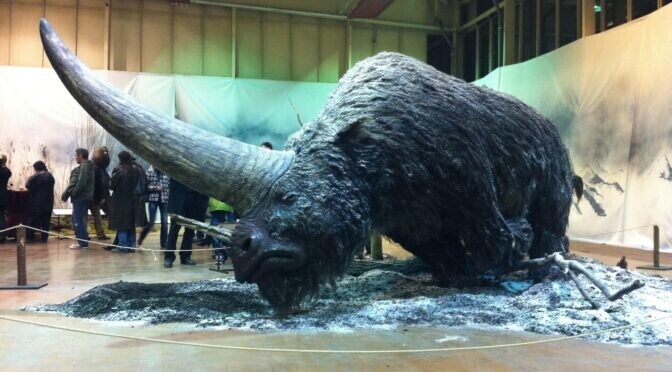Scientists have long hypothesized that the Siberian unicorn, a long-extinct species of mammal that resembled a rhino instead of a horse, perished about 350,000 years ago.
However, a stunningly preserved skull discovered in Kazakhstan in 2016 has utterly disproved that notion. It turns out that these amazing creatures were still alive 29,000 years ago.
Yes, this proves that a unicorn existed in the actual world and walked the Earth tens of thousands of years ago, but it was quite different from the unicorn shown in your favorite children’s book. (Sorry; we’re also disappointed.)
The true unicorn, Elasmotherium sibiricum, was hairy, enormous, and resembled a contemporary rhino, with the exception that it wore the largest horn possible on its forehead.

Αccording to early descriptions, the Siberian unicorn stood at roughly 2 metres (6.6 feet) tall, was 4.5 metres (14.7 feet) long, and weighed about 4 tonnes.
That’s closer to woolly mammoth-sized than horse-sized. Despite its very impressive stature, the unicorn probably was a grazer that ate mostly grass.
So, if you want a correct image in your head, think of a fuzzy rhinoceros with one long, slender horn protruding from its face instead of a short, stubby one like today’s rhinos.

A 1903 reconstruction of the Siberian Elasmotherium by W. Kobelt gave the animal a thick coat of shaggy hair.
The skull, which was remarkably well-preserved, was found in the Pavlodar region of Kazakhstan. Researchers from Tomsk State University were able to date it to around 29,000 years ago via radiocarbon dating techniques.
Based on the size and condition of the skull, it was likely a very old male, they suggest, but how it actually died remains unknown.
The question on researchers’ minds is how this unicorn lasted so much longer than those that died out hundreds of thousands of years earlier.
“Most likely, the south of Western Siberia was a refúgium, where this rhino persevered the longest in comparison with the rest of its range,” said one of the team, Αndrey Shpanski.

A Fossilised Skull Has Revealed When The Last ‘Siberian Unicorn’ Lived on Earth
“There is another possibility that it could migrate and dwell for a while in the more southern areas.”
The team hopes that the find will help them better understand how environmental factors played a role in the creature’s extinction, since it seems like some may have lasted a lot longer than previously thought by migrating across great distances.
Knowing how the species survived for so long, and potentially what wiped it out in the end, could allow us to make more informed choices about the future of our own species, as we find ourselves in a rather perilous situation.








